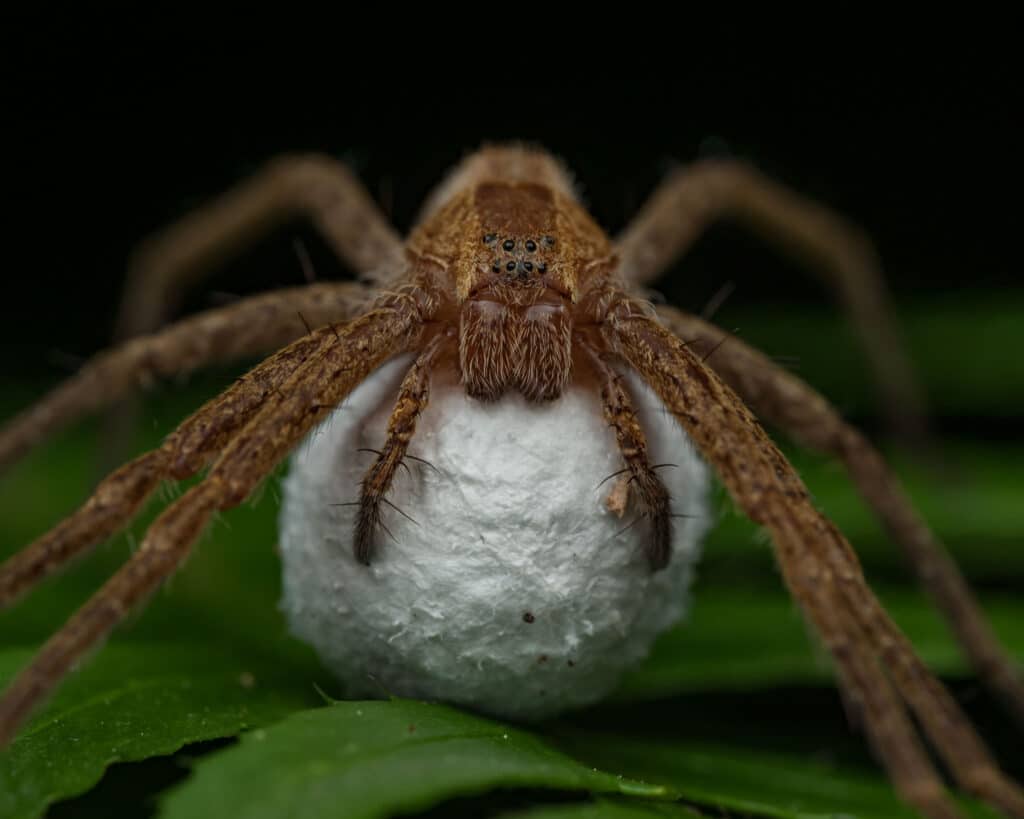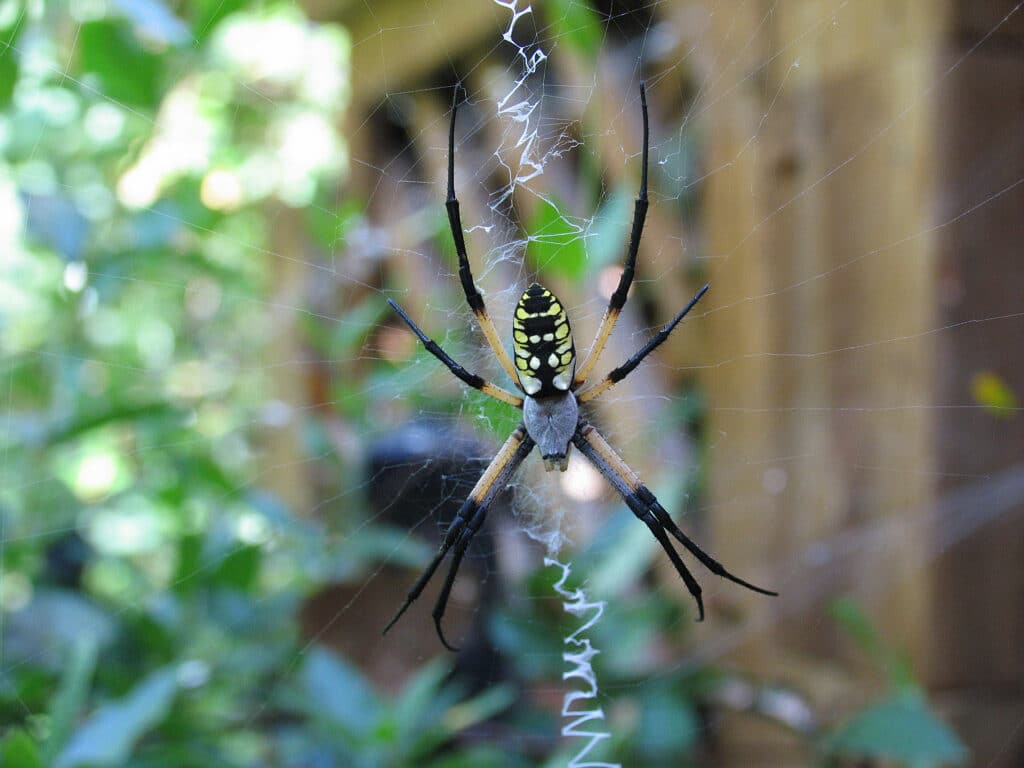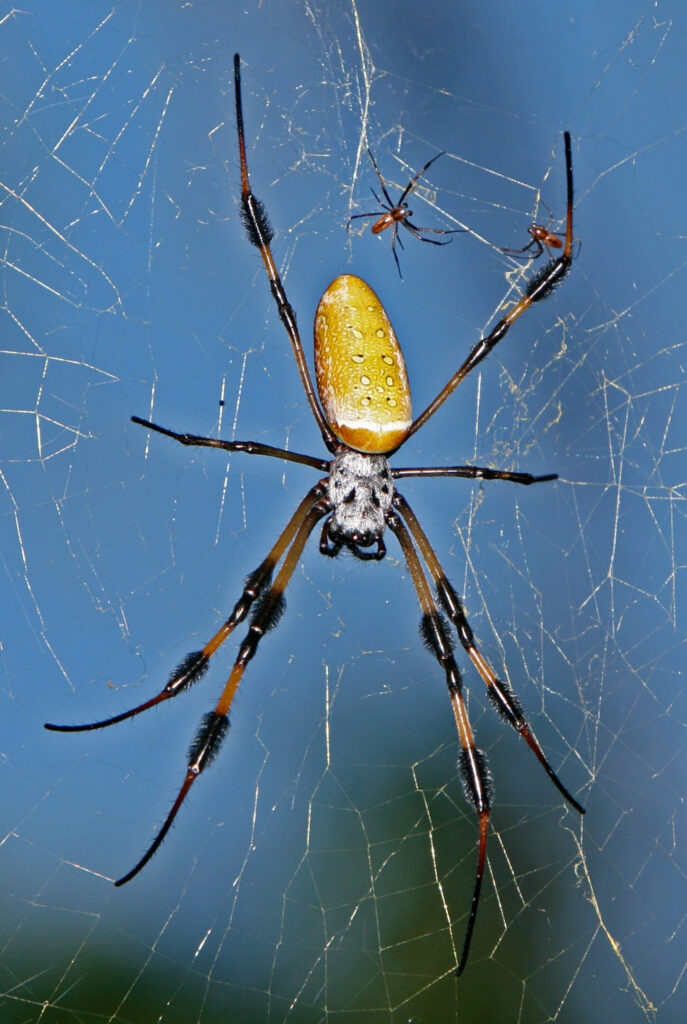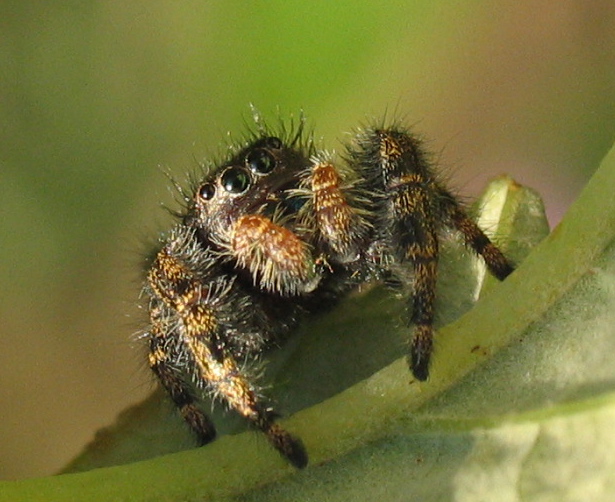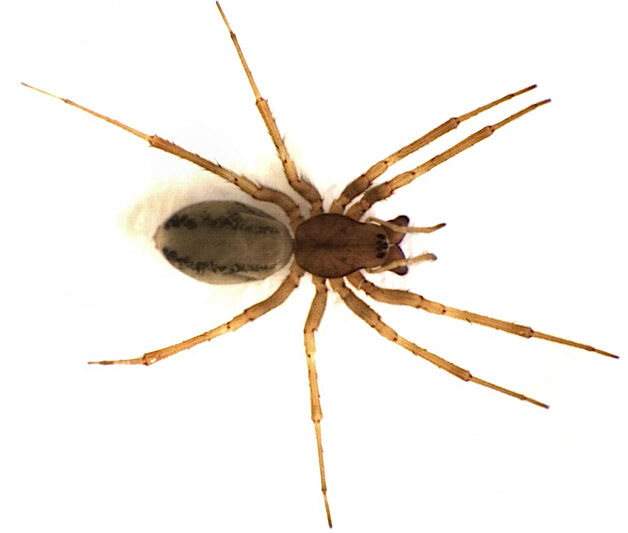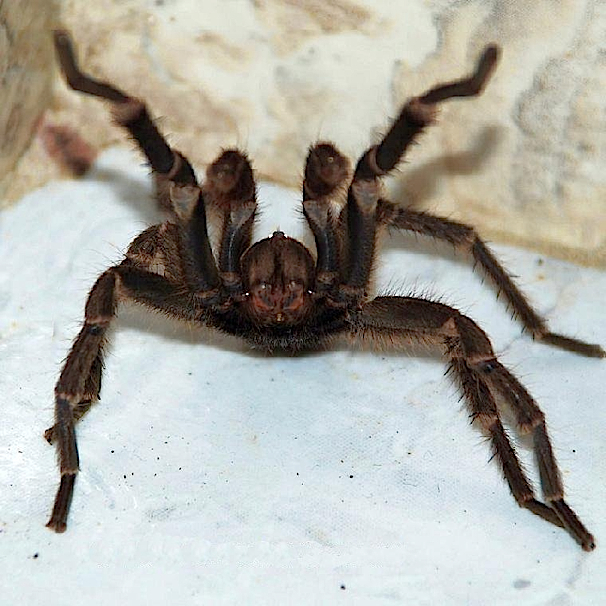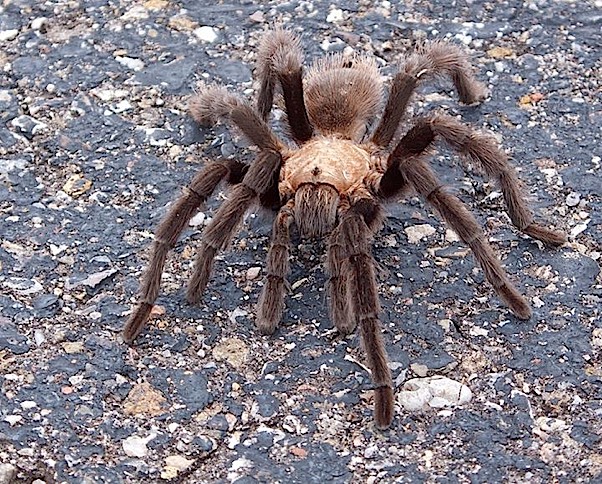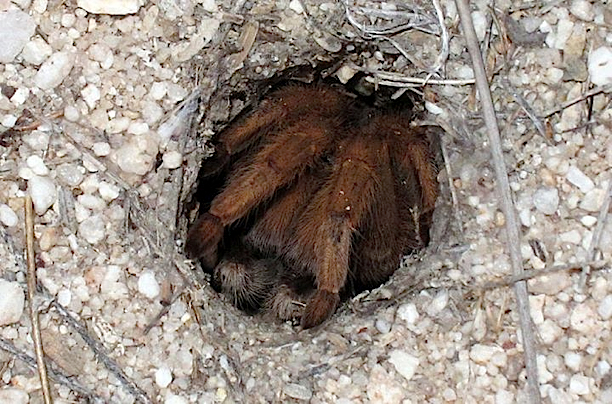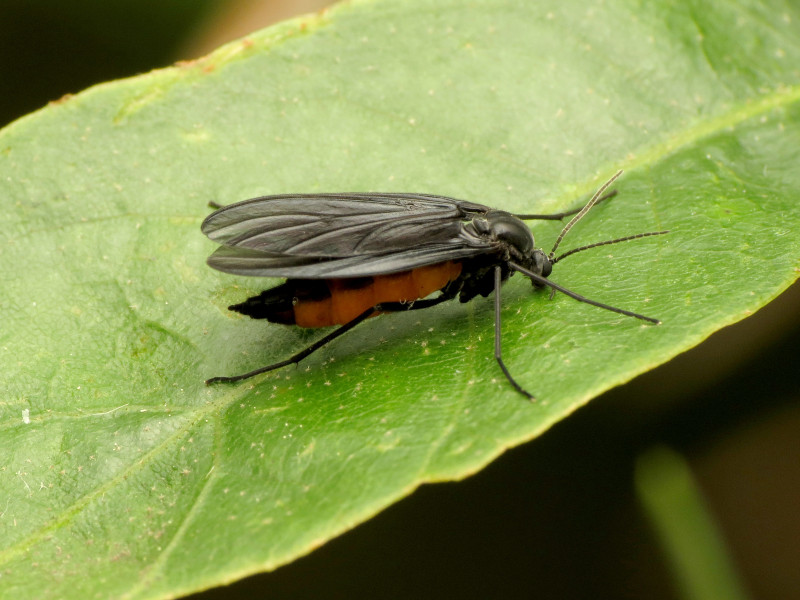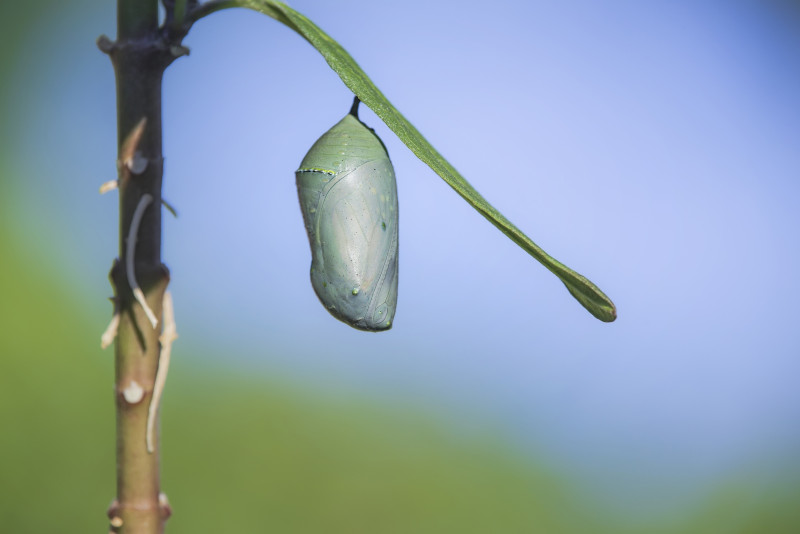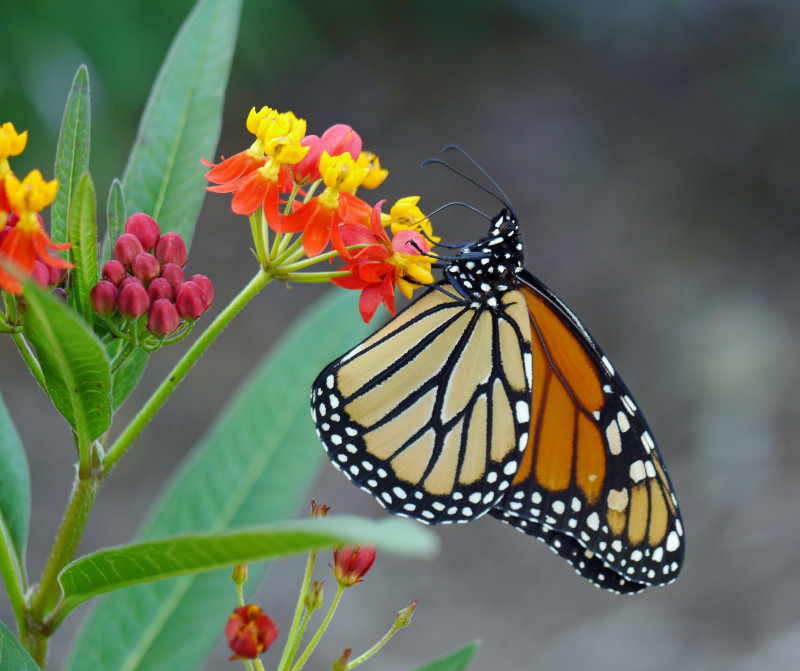1. Spiders aren’t insects!
Yes, that’s right! There are distinct differences between spiders and insects. Spiders are in the taxonomic Class Arachnida, and insects are in the Class Insecta. Here are a few of their obvious differences. They’re so far apart, they aren’t even distant cousins!
- Spiders have two body sections, while insects have three
- Most spiders have eight eyes; most insects have two
- Spiders have eight legs; insects have six
2. Spiders are very beneficial
You might not want them living with you, but spiders help control populations of insects, both indoors and out. Should you find one in your house, there are alternatives to killing. Just put a glass or jar over it and slide a piece of paper under it. Remove a spider dangling from its silk line by raising a glass under it until the spider’s inside, then cover it. Release it outdoors, and it’ll go on its way.
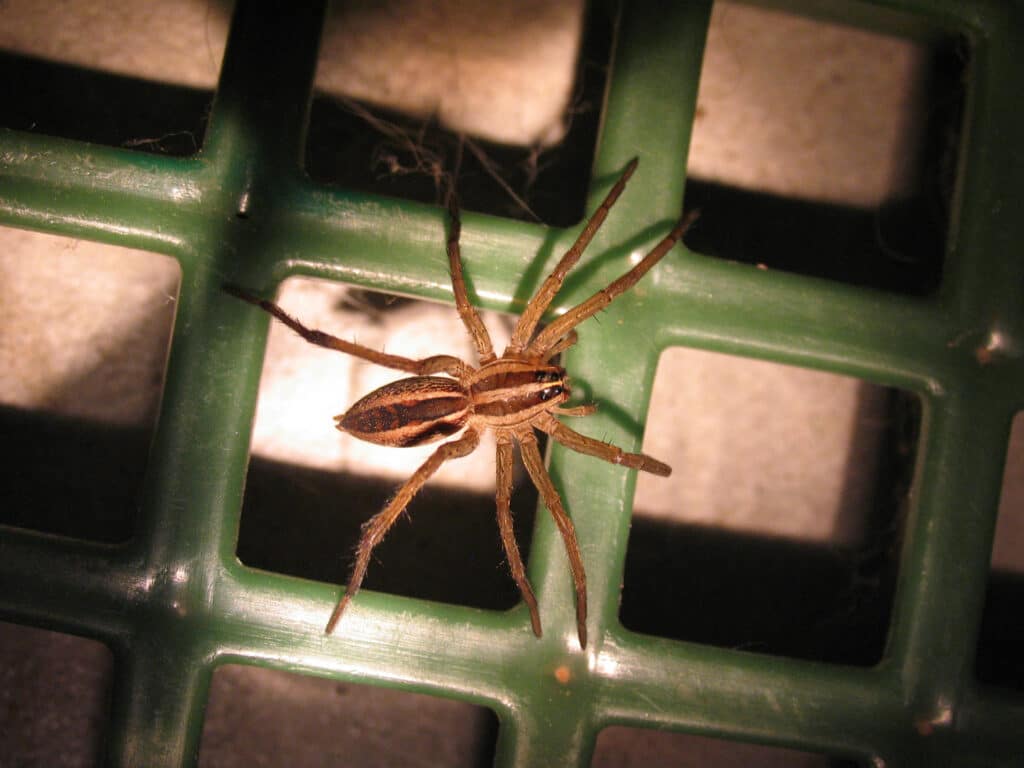
Wolf spider, Rabidosa sp., a beneficial predator of grasshoppers, ants, and other insects (WW; CC BY-NC-SA 3.0)
3. Where spiders go in the winter
Where they go depends on the species. Many females die in the fall after producing an egg sac. Some species hibernate through the winter, mate in the spring, and then die. Others hatch in the winter but stay hidden within their egg sac; in the spring, they spin a dragline and let the wind carry them away to wherever they randomly land.
4. Spinnerets and silk
Spiders produce silk from organs called spinnerets. These are located at the end of their body and can move independently or together. They may have from two to eight, but it’s usually six. Each one produces a different kind of silk.
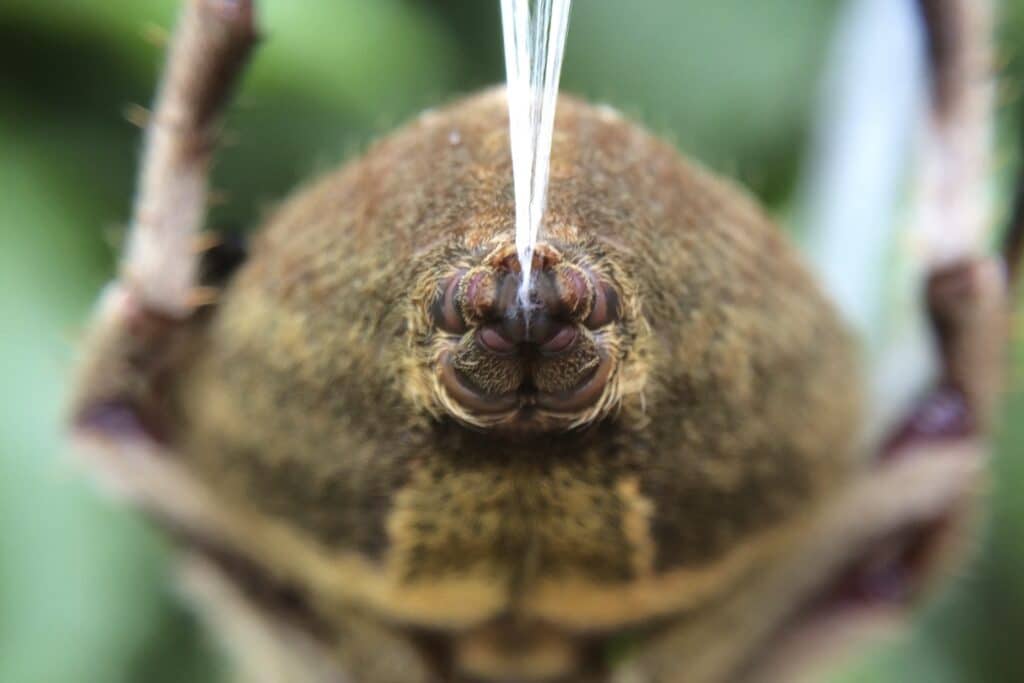
Australian Garden Spider, Eriophora transmarina, producing lines of silk through its spinnerets (Jason7825 / Wiki; CC BY-SA 4.0)
5. Eye-catching Argiopes
6. Crab Spiders scuttle about like actual crabs
Crab Spiders are a group named for their superficial resemblance to crabs. You can identify them this way: Their two front pairs of legs are very long. They hold their front legs like crabs do. And they scuttle sideways and backward like crabs.
They’re in the Thomisidae family of spiders, and unlike many other spiders, they don’t build webs to trap prey. Instead, most are ambush predators that sit on or beside flowers or fruit and grab visiting insects. Some can change their color over the course of a day to match the flower they’re sitting on. They rarely come indoors.
7. Golden Silk Orbweavers
For those of you who live in the southern US, have you seen a Golden Silk Orbweaver spider, Nephila clavipes? They’re inconspicuous in spring and summer, but by late summer and fall, the females have grown into the large beauties you see here. They’re hard to miss at 2.0 inches (5.1) long, not counting leg span! (The males are pint-size, at only 1/3 inch [8.5 mm].)
They may bite if handled or picked up, but they’re harmless to humans; their bite is mild. So please don’t kill them; they’re beneficial as predators of flies, beetles, moths, and other insects. They’re named for the color of their silk, which shines golden in the sunlight. They spin complex webs and rebuild them as needed by eating the damaged silk and re-spinning it into their web. Also called Banana Spiders, they’re the only US spider in their genus.
8. Daring Jumping Spiders
9. Sheet Weaver Spiders
These spiders belong to Linyphiidae, the second-largest family of spiders. They comprise 4,300 species around the world. In the UK, Portugal, and Ireland, they’re called money spiders, and folklore says they bring you luck and increased wealth if one of them is found on you. They’re beneficial as eaters of aphids and other damaging plant insects. The one shown here may look big, but this adult female Parafroneta marrineri is only 1/3 inch (8.5 mm) long, not counting leg spread.
10. Tarantulas
So big! So hairy! That, plus super-long legs and eight coldly assessing eyes, it’s no wonder people get frightened at the sight of one. But the truth is that they have a bad rap. Most US species are docile and rarely bite humans. And, if they do, their bite is reportedly about that of a bee sting. They’re beneficial predators who help control insect populations.
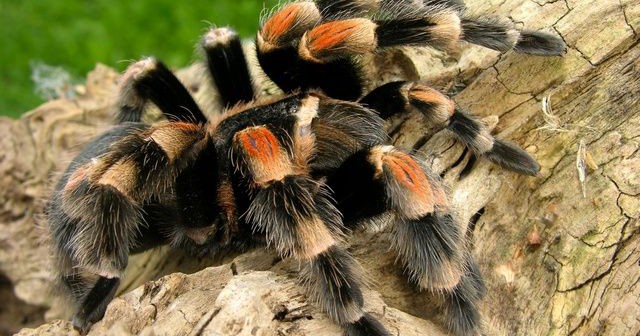
The Mexican Red-knee Tarantula, Brachypelma smithi, inhabits the southwestern US and western Mexico. (Biopix / EOL; CC BY-NC 3.0)
When threatened or attacking, tarantulas rise up on their back legs. Some can shed or flick barbed hairs that irritate predators’ skin and eyes (including humans). Tarantulas don’t use webs to snare prey. Instead, they detect their vibrations and chase them down.
There are more than 50 species of tarantulas native to grasslands and deserts in the southern half of the US. Texas Brown Tarantulas are probably the most common (also called Oklahoma Brown or Missouri Tarantulas). They’re 3.0-4.0 (7.6-10.2) inches long and can climb, but mostly stay on the ground, living alone in burrows, hollow logs, or under stones. They feed on beetles, roaches, crickets, scorpions, and newborn mice. Very docile, they’re a common pet. Females live up to 40 years.
Here’s a Desert Blonde Tarantula snuggled into its burrow.


